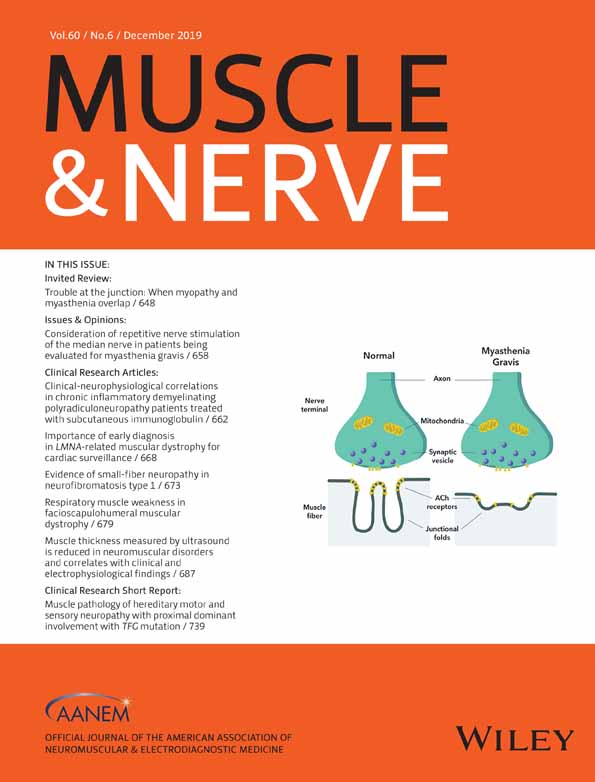Importance of early diagnosis in LMNA-related muscular dystrophy for cardiac surveillance
Funding information: Korea Health Industry Development Institute, Grant/Award Number: HI13C-1468-050013; National Research Foundation of Korea, Grant/Award Number: NRF-2015R1C1A2A01055367
Abstract
Introduction
The identification of LMNA-related muscular dystrophy is important because it poses life-threatening cardiac complications. However, diagnosis of LMNA-related muscular dystrophy based on clinical features is challenging.
Methods
We reviewed the clinical phenotypes of 14 children with LMNA variants, focusing on the cardiac function and genotypes.
Results
Most patients presented with motor developmental delay or gait abnormalities. Eight (57%) patients had prominent neck extensor weakness or contractures. All patients showed ankle contractures at an early stage. Regular cardiac surveillance allowed for the detection of dysrhythmias in 57% of patients at a mean age of 14 years (range, 5–26). All patients had missense variants; however, there were no clear phenotype–genotype correlations.
Discussion
Early diagnosis of LMNA-related muscular dystrophy provides an opportunity for cardiac surveillance, potentially leading to the prevention of cardiac mortality in children.
CONFLICT OF INTEREST
None of the authors have any conflicts of interest to disclose.




